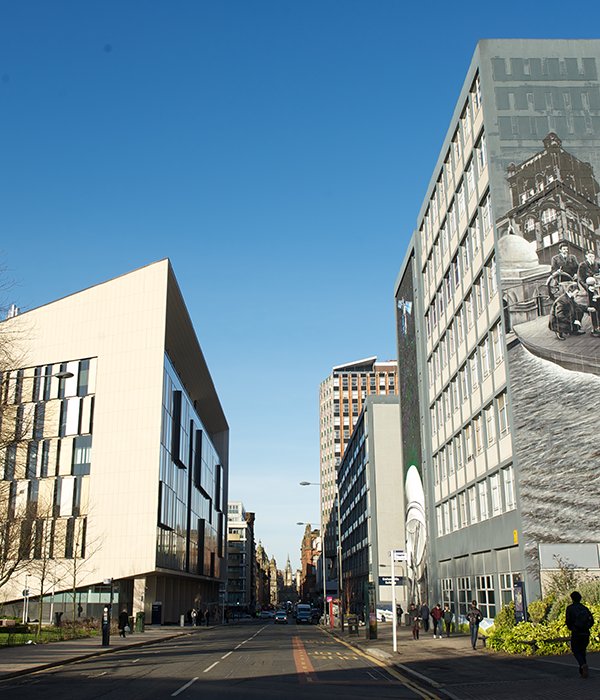In a post-pandemic world, innovation will be key to economic recovery. But in a time of upheaval and uncertainty, how do we ensure discoveries are translated into new products, services and jobs?
Increasingly, innovation districts are being recognised as key drivers of modern, 21st century economic growth. Glasgow City Innovation District (GCID) is one of the most advanced in Europe boasting a network of more than 1,600 innovative businesses working side-by-side, all centred around the University of Strathclyde as its research, innovation and skills anchor.
Here businesses are benefiting from a world-class skills and talent base, access to leading-edge research, and a thriving community of forward-thinking innovation support organisations.
The success of GCID captured the attention of the UK Government as it developed its recently launched Innovation Strategy to help drive growth, level up the UK’s economy and help the country transition to a net zero future. As part of their work in developing the strategy, I had the pleasure of attending a meeting of GCID members as they explained to representatives from the Department for Business, Energy and Industrial Strategy the special ecosystem created in Glasgow.
Chaired by Stephen Ingledew, a member of the UK Government’s Innovation Expert Group, business leaders gave evidence of why innovation ecosystems work – and what can be achieved when industry and academia work together to solve organisational and societal issues through collaborative thinking.

The group heard first-hand examples of the benefit of locating in GCID from Dr Graeme Malcolm OBE, CEO and Founder of M Squared Lasers. Based within Strathclyde’s Inovo building on George Street, M Squared are using quantum technology to create the purest light, which has applications in a vast array of sectors. Dr Malcolm highlighted that they have seen a growth in their partnership with the University through a number of programmes and collaborations and have been successful in raising £32M during the COVID-19 pandemic.
One of the first to recognise the benefit of close collaboration within Strathclyde’s ecosystem was Germany’s Fraunhofer, widely recognised as the world’s leading applied research organization. Professor Martin Dawson, Head of the Fraunhofer Centre for Applied Photonics, highlighted that the co-location of the centre with the University – back in 2013 - was a key factor in their organisation’s investment within Glasgow and its work with students and industry. It remains the UK’s only Fraunhofer Centre and is developing key enabling technologies and training the next generation of PhD students and researchers.
The group also heard from start-up Nude Finance, who are revolutionising the banking sector and helping individuals save for their first home through a successful Seedr campaign that was implemented during lockdown. Crawford Taylor, CEO at Nude, highlighted that the access to infrastructure, talent pool and good office space were key influencers for Nude locating to the District and becoming part of the innovation community. They are based in the Tontine Business Accelerator Programme.

Location was cited again and again as being critical to success, with proximity to both world-class research and a talented pool of highly-qualified graduates and professionals.
Professor Stephen McArthur, Chief Technology Officer at Bellrock Technology, indicated that access to talent from full-time employees to interns has been a key benefit for their data analytics firm and its growth. It has also engaged with university research centres, unlocking opportunities and value for both the company and the University.
Having the right infrastructure in place was also recognised as being an important ingredient for businesses, with room to grow and thrive. Mark Jefferies, Chief of University Research Liaison at Rolls-Royce, has seen their partnership with Strathclyde grow and evolve, citing a key element of the collaborative success being access to world-class capabilities. The firm have described Strathclyde’s relationship with Rolls Royce as an exemplar of how industry and academia can work together – and their development of GCID gives a new and exciting dimension to this relationship.
At the same time, District businesses credited co-location with companies from a wide range of sectors – from FinTech to Space and HealthTech - for leading to chance encounters and collaborative opportunities.
It’s a recipe for success that builds on the city’s rich tradition of industrial collaboration and scientific discovery. Jon-Paul Sherlock, Head of Innovative Manufacturing Technology at AstraZeneca, works closely with the CMAC Future Manufacturing Research Hub and has been part of the work in expanding academic research for industry application. CMAC have enabled all eight key pharmaceutical giants - GSK, Astra Zeneca, Novartis, Bayer, Lilly, Takeda, Roche and Pfizer - to improve commercial processes for a pharmaceutical product delivering significant savings. The improved process understanding led to reduced waste and an increased product quality. The collaboration also involves placement of CMAC staff and students in the firms and has had a direct impact on staff skills.
With more and more businesses looking to join the Innovation District, the University of Strathclyde is expanding to create more space. A further two buildings will more than double the footprint of the District by 2024 to help meet demand. This carbon-neutral development will enable many more innovators to co-locate, attracting further inward investment, creating more jobs, and generating inclusive economic growth.
The global pandemic has forced all of us to change direction, and to re-think what we do. Scotland’s first innovation district – and its community of innovators – is showing that it is uniquely positioned to let ground-breaking innovation flourish and drive our recovery.
